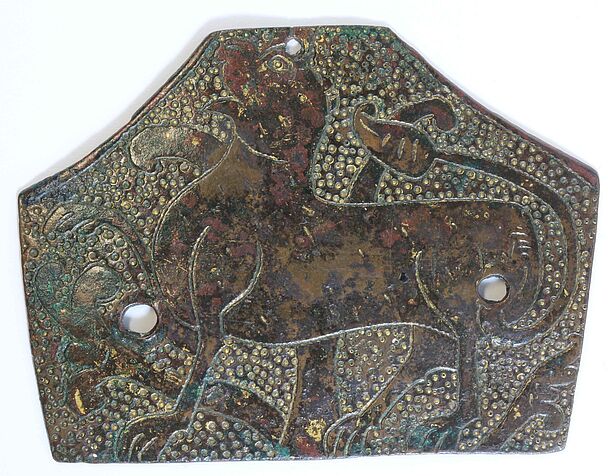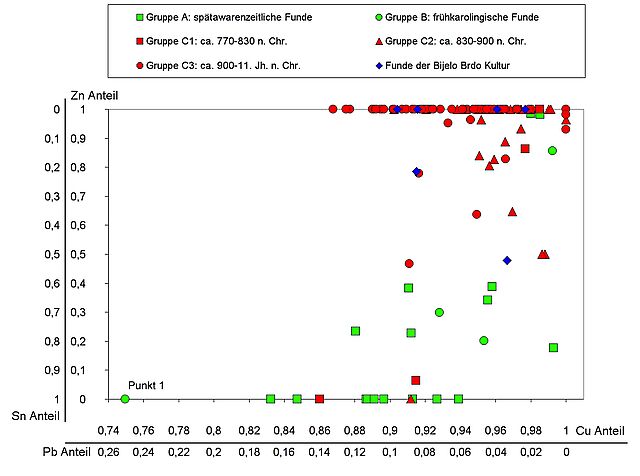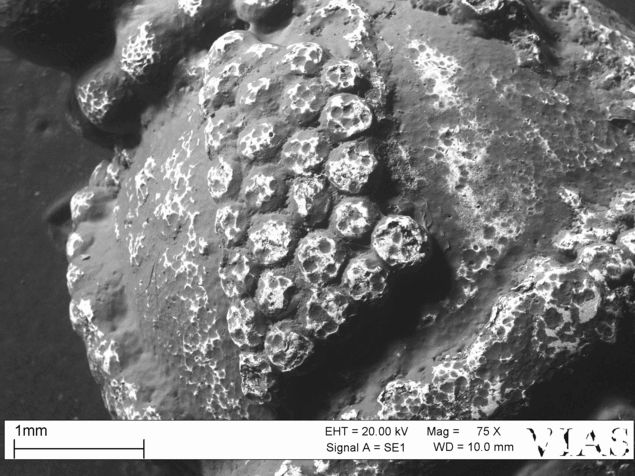Investigations on Metal Circulation in Early Medieval Austria, (PI. M. Mehofer)
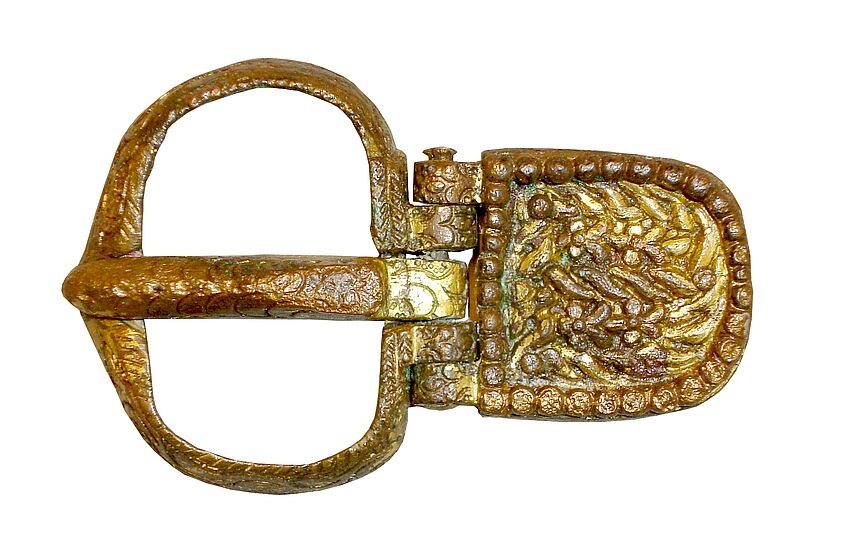
Hohenberg: fire gilded belt buckle (Photo: St. Eichert)
In a previous project on the early medieval Eastern Alps in cooperation with Dr. Stefan Eichert, IUAH, archaeometallurgical investigations were made on several hundred non-ferrous metal and iron finds dating to the 7th to 11th century AD. It could be seen that lead bronze was mainly used for the production of non-ferrous metal artifacts until the 8th century AD. From the 9th century AD on, a change in the used copper alloys from (lead) bronze to brass (copper-zinc alloy) can be seen. Tin bronzes are less common as an alloy and are only occasionally found. In the absence of well-researched workshop finds and with only a small number of existing semi-finished products, attempts were made to narrow down the copper deposits used for the metal supply and thus possibly also the production sites via trace element and lead isotope analyses.
These analyses will now be expanded spatially and further non-ferrous metal finds from the examination area will be studied. Important questions adressed within this research are whether the possibilities of supply with metallic raw materials change with altering cultural, ethnic and political conditions. Does the Awar non-ferrous metal industry of the 8th century AD base on other supply networks than it seems to be the case after the end of the Awar empire in the 9th century AD? Is it possible to locate production sites? Are there continuities or discontinuities in the metal supply recognisable via the technological characteristics?
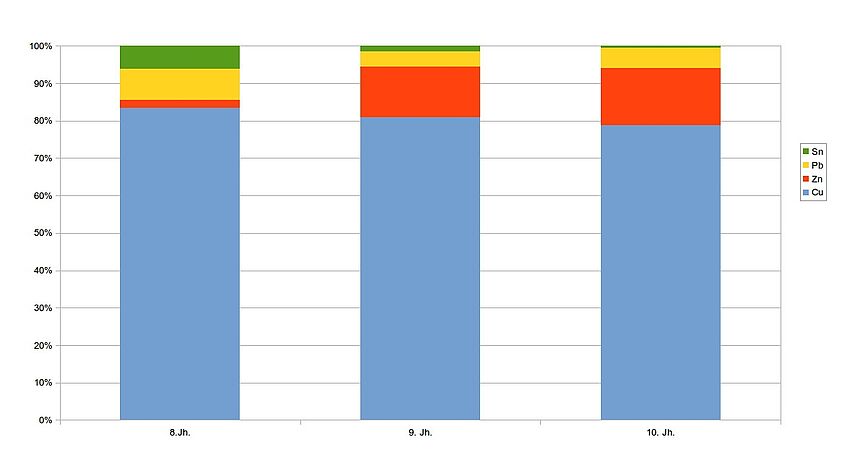
Mean values of alloy compositions of all objects by century (Photo: St. Eichert)
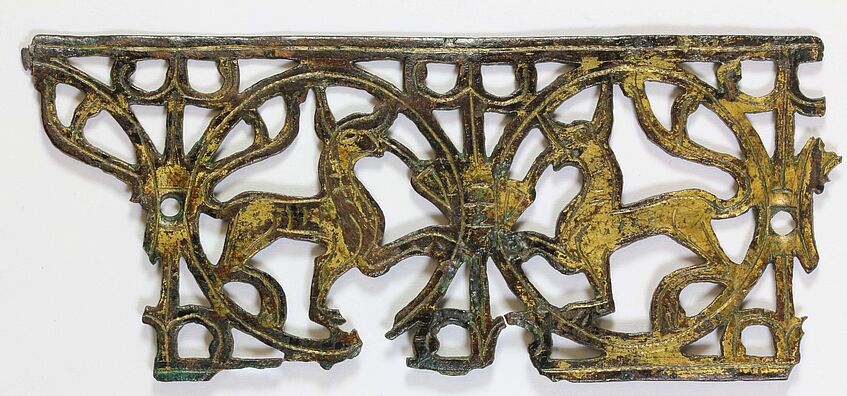
Köttlach: fire gilded fitting (Photo: St. Eichert)
Coopertionpartners
Dr. Stefan Eichert, Institute for Prehistoric and Historic Archaeology, University of Vienna
Prof. Dr. Ernst Pernicka (CEZ Laboratories Mannheim)

